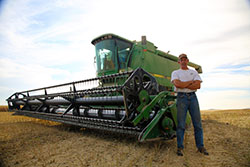|
Closing ammonia plants, Raising Wheat at 7.5 pH.
Less Is Always A Lot More.
Smaller and
locally operated Ammonia plants are likely.
-
The Big 4, Big ammonia plants
have competitive problems .
-
Free enterprise and railroads
bring down old plants.
-
The 50 year old, 1,500 ton per
day NH3 plants are out of the market.
-
Exactrix TAPPS and TAPPKTS
reduces ammonia use in half.

Smaller NH3 plants
are part of a new era in pricing and supplying NH3 to the local
market.
Fortigen, Geneva, Nebraska goes on
line in 2018.
One plant per two million acres.
http://www.hastingstribune.com/news/ammonia-plant-nears-completion-in-geneva/article_d81e5e94-13d8-11e7-bd07-47f543a853f8.html
Less is Always A Lot
More.
Inside the Kramer Seed/McClure document you will discover that an
additional 12% to 15% margin has been going on for about 9
years.
You can review the attached
Power
Point presentation
written by Ag Economist and Manager, Ben McClure.
Ben McClure at
Kramer Seed, Hugoton, likes to raise wheat in Kansas when it is
profitable, and maybe it will be with a
shake down in acres.
Ben has top
notch water from the Ogallala at 220 feet at up to 1,800 gallons per
minute and Dalhart Sandy Loam soils at 7.5 pH.
Ben makes two
passes with single disc openers applying Exactrix TAPPS at rates of
about 10% or the gross income.
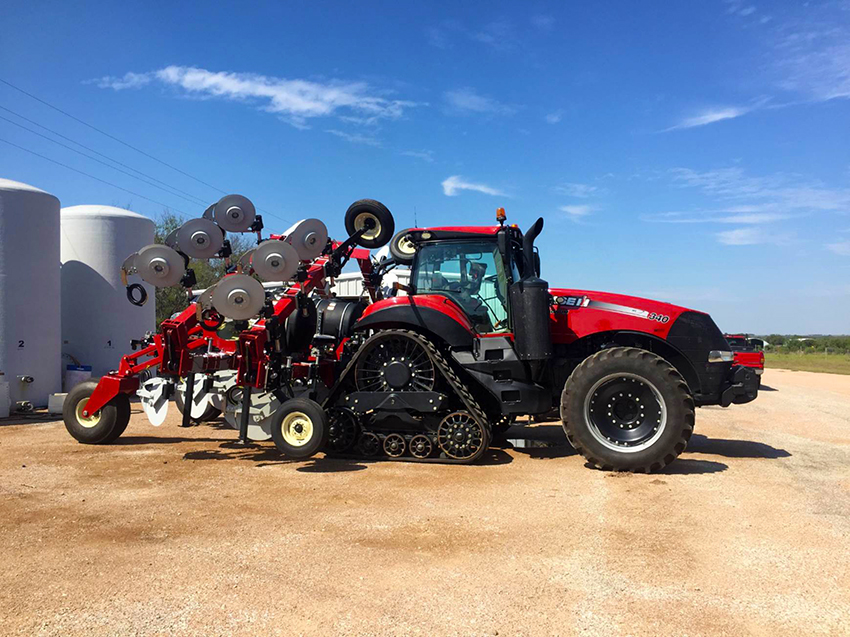

Ben McClure
raises irrigated top production, winter wheat with excellent
certified seed yields and irrigated corn also at 270 to 280 bushels
per acre with Exactrix TAPPS and TAPPKTS.
Ben raises
HRWW and HWWW seed that is power packed with micro-nutrients and
NPKS that is in good balance from TAPPS, TAPPKTS and micros..
Certified and
Registered kernels of wheat that emerge well with over 10 years of
No-tillage Exactrix Rotational Band Loading.
Too much
wheat…too much corn something has got to give. Producer interest in
the CRP continues to grow.
Set Aside
or CRP what is the answer?
CRP in 20 and
30 year contracts are expiring in 2020 may remain as grass and sold
to cattlemen as prime grazing land.
Now for the
Good News.
Reduced acres
is good news for winter wheat producers with deep soils. Soils that
perform well with No-tillage production.
The $10.00
per bushel wheat problem.
The bad news
is the soil pH in these top winter wheat production areas are shot
and require a wheat price of $10.00 per bushel to neutralize.
The winter
wheat production areas of the Palouse have pH levels as low as 4.5
to 4.0 with large and expansive site areas.

The
economic end of crop production or the cliff drop off point is
5.4 pH.
A 4.0 pH is like trying to raise wheat on 10 pH soil…nothing works
at the extremes of life.
Worms prefer a 7.0 pH and they thrive at 7.0 pH. Worms can handle a
6.0 pH and an 8.0 pH and that is the end of the line.
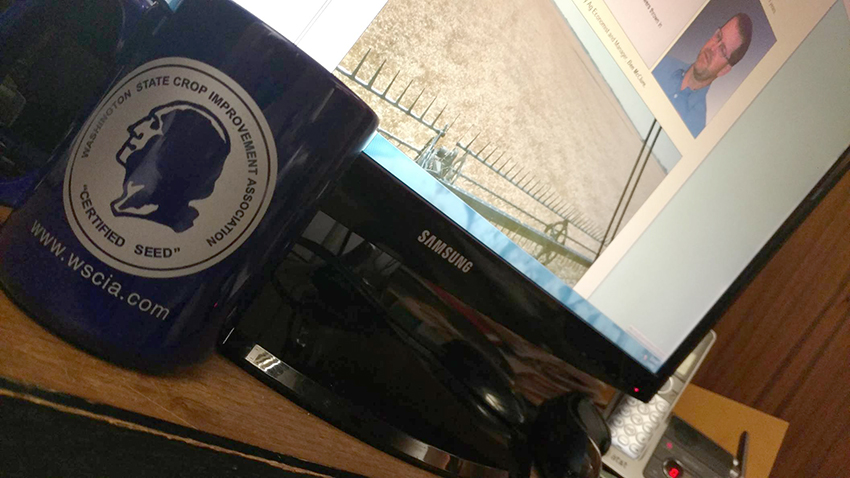
Washington
State Crop Improvement Association is backed by Spillman Farm,
USDA-ARS and University breeders dating to the 50’s and 60’s.
Dr. Orville
Vogel breed the revolutionary shorty bearded wheats. Semi Dwarf
Gaines SWW was the first….club wheat went into decline immediately.
Then came Daws,
NuGaines, Luke, Lewjain, and then Stephens, The top of the line from
Oregon State with the help of Washington State.

Breeders keep
solving for low pH. Eltan is a variety from 25 to 30 years ago,
Stephens (1980) is an Oregon State Variety from Dr. Kronstad.
Stephens can produce dryland yield average wheat
yields of unbelievable production. Note: As high as you can go with
a No-till yield of 165 bushels per acre with a Yielder Drill at
Walla Walla, Washington.
In the PNW….we
must solve the yield problem with lime about 3 million acres of deep
Palouse soils. Possibly we will need to go back to older varieties?
Maybe, older varieties may have a lot more
yield punch when soils are neutral.
Once 10% of
the farmers lime the soil and land is sold or purchased based on pH,
the critical mass will be obtained. And the swing will come
as landlords take the hit.

At 5.0 pH,
52% of the nutrient applied at 5.0 pH is not available.
At 5.5 pH,
33% of the nutrient is wasted.
At 6.0 pH,
22% of the nutrient is wasted. If you spend $150 to raise
irrigated corn with nutrients from the local fertilizer dealer,
$33 is hush money.
You need to
remember that the fertilizer manufacture gains 75% of the dollars.
The poor
fertilizer dealer (he has got to listen to a unhappy customer) the
dealer always gains 25% of the extra $33.00 per acre, so the
fertilizer dealer puts up with the problem.
An extra
$33.00 per acre goes to Calgary or Wichita every time you do not
lime to 7.0 pH.
The money goes
back to the fertilizer dealer and the manufacturer who got producers
started.
The Fertilizer
Industry created a problem for our landlords and producers. The
Fertilizer Industry paid the university to educate the producers.
They continue to pay the university to educate producers on the
proper use of their materials.
So it is
highly advantageous for the fertilizer dealer to promote no liming
until the farmer goes broke at 5.4 pH, the
cliff, the drop off point.
The Fertilizer
Industry will break farmers. It has happened before. The Big Four
make big mistakes.
They are
going to break us all, the Fertilizer
Manufacturers have a big problem on their hands.
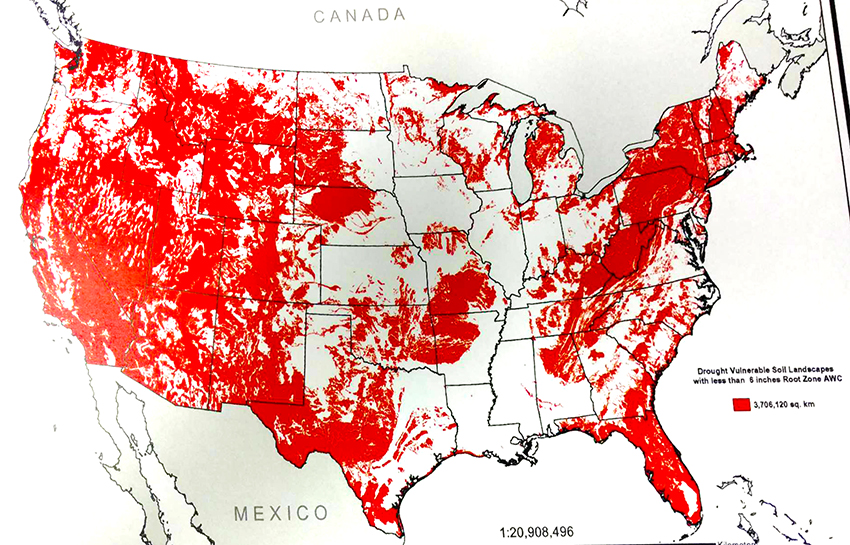
In Red, aavailable
water is less than 6 inches stored in the Root Zone,
or about 3 feet of soil at 2.5 inches per foot.
Pasture land
is also indicated in Red, or oil
wells in rotation with winter wheat shown in Red in Oklahoma and
Texas. Grazing winter wheat and tillage for annual winter wheat is
common in oil country.
Maybe we need
a Hybrid Rye or Hybrid Triticale that will park the winter wheat
combines and let cattle grazing with much more
carrying capacity be the objective.
Another
University/USDA problem that needs work.
The cattle
grazing pastures of Great Plains need more budget and economic focus
from the Universities like Texas A&M with better varieties of winter
annuals, and perennials.
Dual purpose
wheat is not saving soil and moisture when tillage is involved.
Carrying capacity is the goal for stocker feeder producers. They
most likely should not be raising wheat when water and soil
efficiency is considered.
Stop the
tillage on the shallow soils of the west.

Alfalfa
Growers know the pH is critical and best at above 7.0 pH,
it takes Rhizobia with available Molybdenum to produce
healthy roots to raise top yielding Alfalfa.
In every case
it is the same in winter wheat production in the interaction of
microbes and plant genetics.
Winter
Wheat is Optimized, 7.4 pH is about right,
your bloodstream pH. All biological life including a coral
reef requires a slightly alkaline land and seascape.
It looks like
the plant breeders have finally painted themselves into a corner.
The fertilizer
manufacturers need to take a technology lesson,
about 1/3 of the ammonia plants can be closed if producers
will start raising more with less.
Less nitrogen
means less lime and better economics for all.
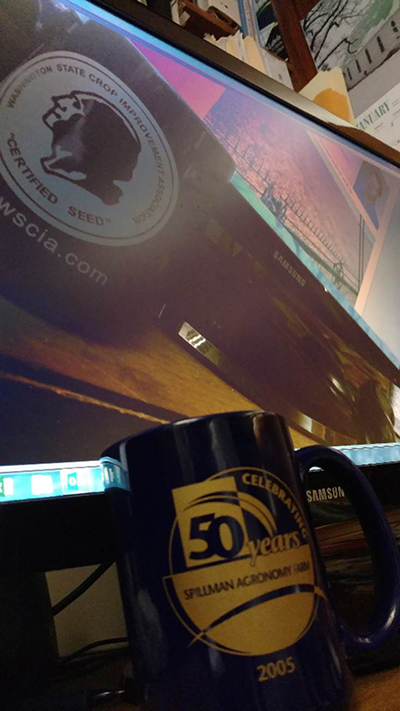
Spillman
was the first statistical breeder in the early part of the
homestead act of the Washington State College, A Land Grant College
to serve the Pioneers.
In 1961, the
Agronomy Farm was named Spillman Farm after Dr. William Jasper
Spillman (1863-1931), the distinguished geneticist and plant breeder
at Washington State University that independently rediscovered
Mendel’s Law of Recombination in 1901.
http://css.wsu.edu/research/crops/
The Cook
Agronomy Farm is located north Pullman.
A USDA-ARS research plant pathology farm named for Jim Cook in his
lifetime.
Cook remains the great communicator of root diseases of wheat.
Jim was brought to WSU in the Vogel era to identify the limiting
factors of wheat yield.
A student of the Red River Valley of the North and California
University system.
Dave Huggins has supplied the following data regarding
the Cook Farm pH.
Is it time to
start over?



Uniformity
of Injection means less is required.
What is
TAPPS?
A vermiculated vertical
5 inch band of balanced and 1% CV application uniformity of
nutrients, Tri-Ammonium Polyphosphate Sulfate with positional
availability.


High Field Wide Averages with Mustang Openers At Gangwish Seed Farm,
Shelton, Nebraska.

In VRT-Site Specific application of Channel Varieties, Exactrix
TAPPS and TAPPKTS in Platte Valley soils have good economics.
Corn on corn yields with cover crop soil protection continue to
improve with No-tillage and Exactrix TAPPS, TAPPKTS and Micros.

https://vimeo.com/bandbvideo/review/162609745/b8a4c47ab2
Longer Term, 118 day
corn, finalized out at harvest with some fields at 280 bushels per
acre and some fields at 290 bushels per acre.
More news about top yields in Corn, Wheat, Canola and Soybeans at
www.exactrix.com/EWAC.com.
Banding into growing
winter wheat is a big solution for cattle grazing of winter wheat.
Double Yields from one crop can be greatly enhanced.
Wheel Tracks on the left indicate the NH3 trailer is a single 1,450.

Winter wheat gets Mustang Treatment
with Exactrix TAPPS at low rates of 8% to 10% of the gross income.
Dale Bathurst at Abilene, KS.
An amazing view and the “Last Pass.” Mustang Banded on Both Sides.
This is a lift assist, Mustang, 30 feet on 15 inch band spacing at 7
inch depth,
towing a 1,450 gallon NH3 tank.

Thio-sul®
exceeds N-serve in yield and cost with Exactrix TAPPS, Uniform
Chemistry.




Shipping, Following testing.
2KM, Formulator of TAPPS, Sparging Reflow Blender.
Season Long Filtration.

2KC Series 3, NH3 Mass Flow Weigh Master,
Balanced Nutrients, 2KR, Blender or 2KP, Looking Glass, Ferrilene.


TAPPS Formulator 2KM Weigh Master.
Liquid
NH3 Injection, 2KC Weigh Master, Series 3.
Your Great
Plains Reporter,

Guy Swanson.
|































